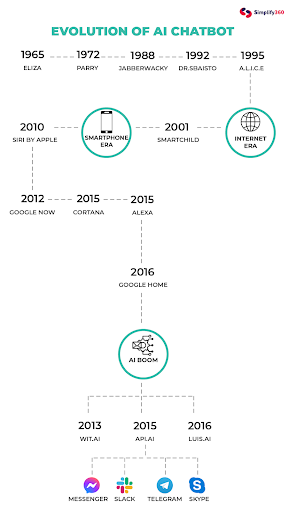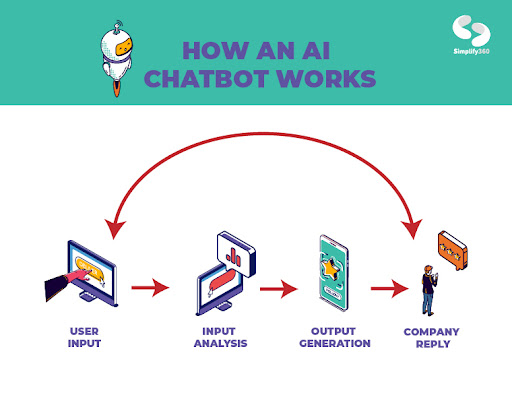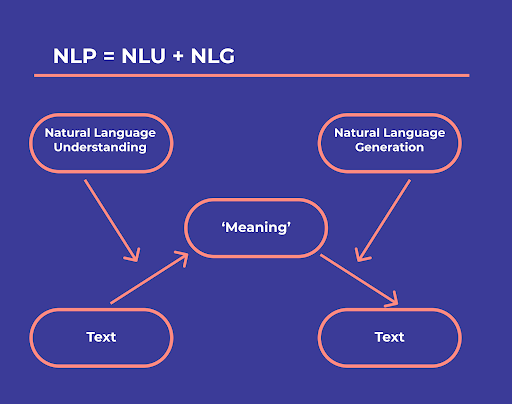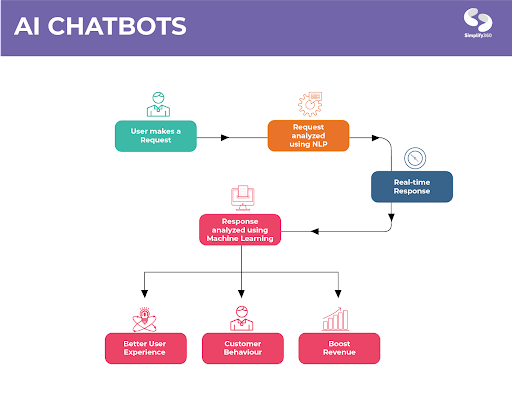It is barely an exaggeration to say that AI Chatbots are the ‘in-thing’ right now!
Thanks to their capability to mimic human conversation, chatbots are utilized by 80% of businesses. It is used by banks, restaurants, and (even) the government. From a small coffee shop to a big eCommerce company, they occupy (almost) all business spaces. While we all know AI chatbots are simply talking bots, we still want them to behave as humanely as possible.
And why not?
They can improve customer experience, reduce customer support costs and increase sales. It’s simple – AI chatbots are a one-time investment for long-lasting benefits.
But, you already knew this.
Many blogs explain the importance of AI chatbots and focus solely on ‘technology’. This is because AI is the first thing that people think when they hear ‘chatbot’. This means little to no attention is paid to ‘language’.
We don’t deny that AI is the core of conversational chatbot technology. But what it equips chatbot platforms with is the real hero – language.
In this blog, we will explain to you what linguistics is in chatbots. But before that, let’s explore some details about AI chatbots.
An Introduction to AI Chatbots
We all know AI chatbots have made huge progress over the last few years. Businesses today are rapidly switching to AI chatbots because of their multi benefits. They can improve your FRT, reduce customer churn, introduce precision and accuracy to your customer data, and provide 24/7 customer support.
As defined by Matt Schlict,
A chatbot is a service, powered by rules and sometimes artificial intelligence that you can interact with via a chat interface.
Based on the above definition, it can be easily concluded that AI wasn’t always a part of chatbot platforms. Although a reality today, the concept of AI chatbots is relatively new. What distinguishes them from their previous versions is their ability to talk. Often called conversational chatbots, these bots can understand the tone, sentiment, and urgency of users’ input.
But, have chatbots always been this intelligent?
The answer is a NO!
Rule-Based Chatbots vs AI Chatbots
The previous versions were basic and simple. Known as rule-based chatbots, these could only respond to customer queries and not hold a conversation. This version of a chatbot was programmed to identify specific commands/ keywords to produce a response. Their actions were guided and directed by a series of pre-defined rules.
Although this makes it easier and faster to train. But, their inability to understand human language led the way to drive AI chatbots.
AI chatbots, on the other hand, can analyze the natural language used by humans. It continuously learns from its user interactions and gets smarter along the way. Not long after being deployed they can generate their answers to complicated questions. Once trained, conversational AI chatbots can increase their precision on their own.
You can learn more about what differentiates AI chatbots from Rule-Based Chatbots here
👉 Chatbots vs Conversational AI Chatbots
Now that we know what differentiates AI chatbots from chatbots, let’s explore what enables AI chatbots. What makes an AI chatbot imitate human linguistics?
Understanding the Language In AI Chatbots
So far, we’ve established that AI chatbots are far better than chatbots of the past. Also known as voice assistants, modern conversational chatbots are sleek and sophisticated. They have moved past unnatural and robotic conversing qualities.
Yet, not all chatbots are equal. Every chatbot is customized based on the user’s needs and wants. This highlights our first important point – AI chatbots are customizable. However, when not designed properly they can become a burden on your human agent.
It is important to remember that the major reason behind deploying a chatbot-based support system is to increase your agent’s productivity. With conversational chatbots, we strive to provide customers with an easy and seamless experience. So, naturally, when your bots don’t understand human conversations or their patterns, it adds to the agents’ burden.
Simply put, AI chatbot platforms must understand humans’ natural language. This is the second highlighted point of our blog, brands invest in an AI chatbot that studies human language.
So what enables these bots to process users’ speech and intent? Let’s understand this by understanding how AI chatbots work.
How Do AI Chatbots Work?
AI chatbots run on technologies such as NLP and ML. These are supporting technologies that facilitate your bots with conversational interactions. Natural language processing (NLP) allows your bot to understand and decode complex human language. Machine learning (ML) on the other hand interprets users’ intent based on their language.
Have a look at this pictorial representation of how AI chatbots work.
Your chatbot works in 4 stages:
- The first step includes user input. This is where your customer registers their query. Based on how you enable them, customers can either enter their query textually or vocally.
- The next step, input analysis, is where your chatbot technology comes into the picture. The backend functioning of a chatbot platform, enabled by AI, NLP, and ML, helps your chatbot to understand the user input.
- Once your chatbot understands the intent, tone, and sentiment behind the user input, it responds accordingly. This process is facilitated by ML which runs a background search. The chatbot platform takes every previous user interaction into account before generating output.
- Lastly, the output generated by the chatbot platform is converted into a language that matches the users’ language. This step is seen as the reply.
The three major technologies that help your chatbots imitate human communication:
- Natural Language Processing
- Machine Learning
- Artificial Intelligence
When combined, these make the pillars of your chatbot’s neural network, powered by AI.
Fundamentals of Neural Network
Scientifically, neural networks refer to the many interconnected nods that act like mini-brains. These are designed to ensure your computer’s data processes similar to the human brain. Various layers of computations are interconnected to enable your computer to understand and generate text.
In AI chatbots, neural networks help analyze user input and understand its meaning.
Let’s understand the roles of these layers.
Natural Language Processing – The Base for Near Human Interaction
NLP is a combination of natural language understanding (NLU) and natural language generation (NLG).
Remember the second stage of the chatbot’s functionality – Input analysis. NLU breaks down the complex language used by users into computer-understandable language, i.e. 0 and 1. This is the preliminary step that enables chatbot platforms to understand users’ input.
NLG, on the other hand, is utilized in the last stage – the company’s reply. Once the computer has generated its output, NLG translates the computer’s binary language to human linguistics.
Machine Learning – Making Your Bot Smarter
ML is often defined as the algorithm that enriches your system’s learning. It does so by using past observations and experiences. In fact, NLP relies on ML to help it learn rules fed by developers.
Precursors to Teaching Human Language to AI Chatbot
One thing to keep in mind before deploying a chatbot is that it reflects your brand.
AI chatbots as an extended arm of your brand’s anatomy. Along with speaking human language, it must be fluent in your brand’s tone and policy.
For example, if a bank wants to utilize AI-based conversational chatbot facilities it will prefer using formal language. On the other hand, a fun-loving sports brand would prefer its bot to use colloquial expressions.
Your chatbot’s functionality and personality must go hand-in-hand.
Example – How Does Linguistics Play a Role in AI Chatbot Functioning?
Modern customers prefer natural conversations over non-flexible service templates. Limiting your chatbot-supported live-chat customer service to fixed options is no different than customers waiting in queues to connect to a service agent.
Your chatbots must predict customer needs. They must understand what humans need and then respond to their queries accordingly. This is why linguistics plays an important role in conversational AI chatbots.
As discussed above, there are two main parts to a conversational chatbot’s working
- The chatbot understands the user’s language
- The chatbot responds in the users’ natural language
To execute the first part you must train your chatbot in human language. This is done with the help of NLP. This helps it decipher the similar intent behind different expressions.
For example, consider these three expressions
- I would like to book a spa session
- Is there a spa session available?
- What time is available for a spa session
All these expressions have the same intent – the user wants to book a spa session.
While this is easier for us to determine, a chatbot needs to learn this first.
After training your chatbot in human language understanding user tone becomes easy. This ensures human-like conversations.
Hypothetically, “Spa session not available. Goodbye” is an accurate response to the above-entered user queries. However, it is neither helpful nor friendly. Moreover, it can hurt users’ sentiments causing it to damage your brand’s reputation. When in situations like this, your chatbot must be able to direct the customer to book another appointment.
Hence, AI chatbots are more than just chatting bots! It is a machine equivalent to your human support.
Conclusion
Technology can never replace humans. No matter how much you train your AI chatbot in human languages, it will always introduce itself as a bot. Yet, it is an important integral part of many companies. Take Google Assistant, Siri, and Alexa for instance. All of these voice assistants reflect their brands.
AI chatbots are more than just welcoming and bidding farewell. They schedule appointments, recommend products, send automated emailers, etc. They help you establish a uniform tone for your brand. This increases your sales thereby increasing your revenue.
The protagonist behind all these benefits remains one minor update – Language.
Introducing linguistics to AI chatbot platforms gave it the much-needed edge. Now it can gauge the gravity of the situation and take action accordingly. If a customer leaves a conversation thread saying ‘This is useless. I am leaving’, your chatbot would apologize instead of thanking the customer to close the thread.
Therefore, training your AI chatbots is crucial if you want to offer personalized customer support with AI-powered chatbots.




